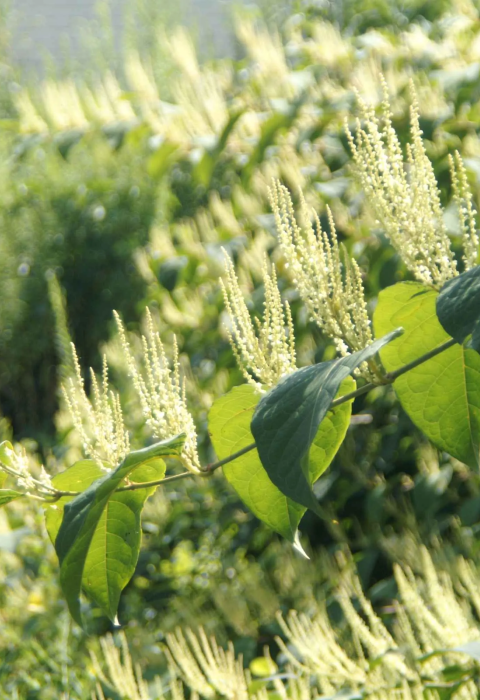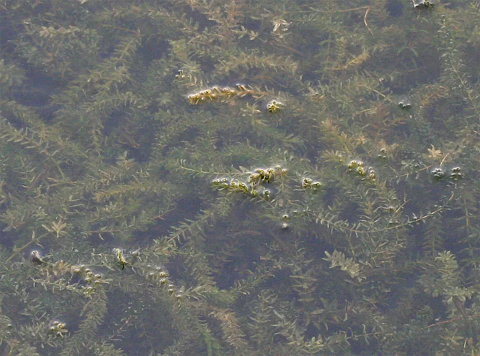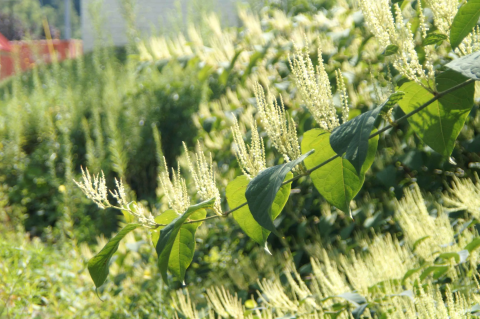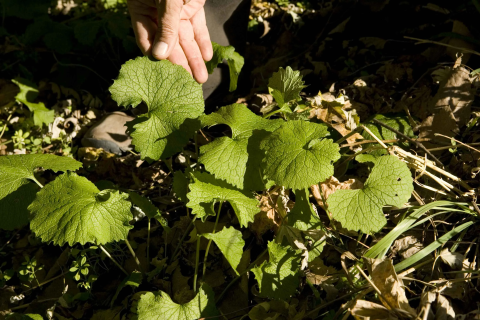Tangled vines, uncontrollable growth, an alien plant attacking unsuspecting victims. While this may sound like a snapshot of Christian Nyby’s famous science fiction movie The Thing from Another World, it could be the description of your backyard, or your local park or wetland.
Take Hydrilla verticillate, or waterthyme: Fishermen first brought this aquatic plant from Asia in the 1940s with a simple goal — to provide a new source of food for the native aquatic life and increase fishing yields. People continued to aid the spread by decorating aquariums with Hydrilla and even dumping them into waterways. Nobody could have predicted what was to happen next.
Hydrilla quickly caused more harm than good. It overtook nearly every habitat it was introduced to, stripping the native freshwater plants of resources and nutrients. This snowballed, and eventually Hydrilla negatively impacted the pH, water quality, and oxygen levels in its new habitat.
The U.S. Fish and Wildlife Service has programs in place to address invasive species invasive species
An invasive species is any plant or animal that has spread or been introduced into a new area where they are, or could, cause harm to the environment, economy, or human, animal, or plant health. Their unwelcome presence can destroy ecosystems and cost millions of dollars.
Learn more about invasive species , including the endangered species program, habitat restoration, and invasive species removal. And yet, Hydrilla soon became the highest-profile invasive water plant in the United States.
This story is far too common in the world of ecology and conservation: through travel and trade, humans have brought invasive plant species that do not belong into these new environments, and the local ecosystems pay the price.
So, what makes a plant invasive?
To be considered invasive, an organism must be brought from another part of the world and have negative impacts on the ecological community around it. This can come in many different forms, such as pushing native species out of their habitat due to overgrowth and taking up nutrients. Invasive plants can also cause excessive erosion, impacting freshwater or coastal ecosystems. Few native animals eat these plants, leading to dense overgrowth and reduced ecological diversity.
Invasive species live all around us. Plants you’ve been familiar with your entire life could be invasive. When a plant takes over an ecosystem, it restricts the amount of resources for native plants. So, during a summer nature walk, keep an eye out for plants that appear to be dominating the surrounding vegetation.
Alliaria petiolata, or garlic mustard, is dispersed through the Northeast. It covers the grounds of wooded areas, making it difficult for native plants to grow. Not only does this influence the vegetation, but animals that depend on those native plants for food have less to eat. Lack of wildlife diversity in a habitat might be caused by overgrowth of an invasive plant.
The Service has hosted garlic mustard removal events in the past. But you don’t need to attend one to make a difference, just look in and around your backyard! Although garlic mustard is harmful to native plants, it is not harmful to humans and is safe to touch. Here’s how you would go about removing this invasive species:
Identification
∙ In the early stages of growth, garlic mustard can be identified by its green, almost heart shaped leaves.
∙ White, four-petaled flowers begin to bud around the second year of growth.
∙ Garlic mustard grows in clusters. If you’ve found one, it’s likely you’re not far from more of these invasive plants.
Removal
∙ Pulling out garlic mustard is a natural and effective way to control its population.
∙ If you are removing garlic mustard at home or in a garden, it is important to pull the plant from the ground — roots and all. Plucking off leaves or small portions will not stunt growth and the garlic mustard will continue to cause havoc in the habitat.
∙ If possible, try to remove garlic mustard before the flowering stage. This will significantly reduce the plants ability to reproduce.
Disposal
∙ When the whole plant is removed, take it away from the site and dispose of it in a trash bag with household garbage.
∙ Do not compost. It only takes a small trace of a garlic mustard for the population to rebound. Even plants removed from the root up can still set seed and begin the growth process again.
∙ Garlic mustard can be successfully incorporated into family dinner plans as an alternative to being thrown away. It’s safe to eat and can be made into a healthy pesto recipe.
Through identifying, reporting — and when possible, removing — invasive species in the community, you are doing your part in preserving local biological diversity.







